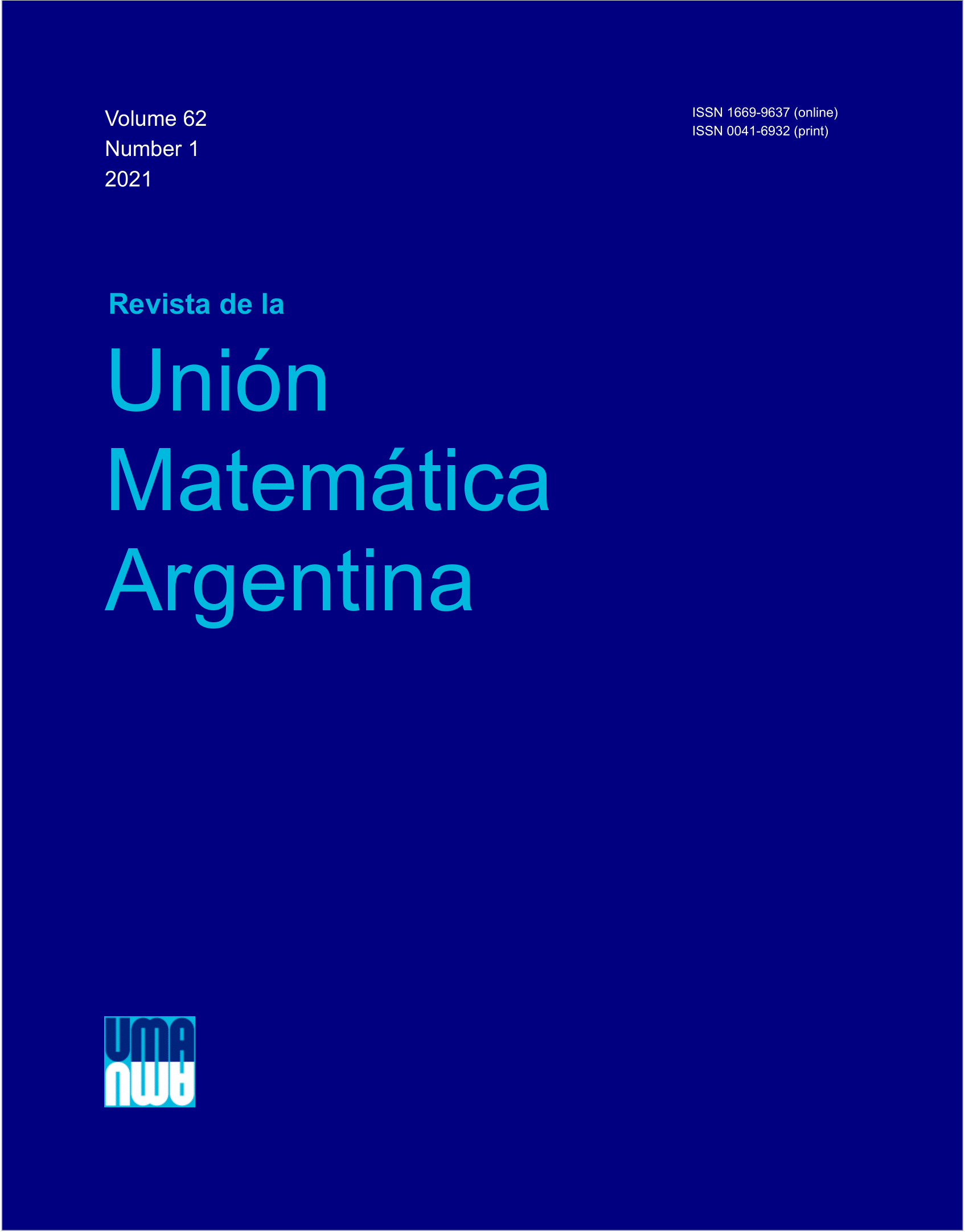On Egyptian fractions of length 3
DOI:
https://doi.org/10.33044/revuma.1798Abstract
Let $a,n$ be positive integers that are relatively prime. We say that $a/n$ can be represented as an Egyptian fraction of length $k$ if there exist positive integers $m_1, \ldots, m_k$ such that $\frac{a}{n} = \frac{1}{m_1}+ \cdots + \frac{1}{m_k}$. Let $A_k(n)$ be the number of solutions $a$ to this equation. In this article, we give a formula for $A_2(p)$ and a parametrization for Egyptian fractions of length $3$, which allows us to give bounds to $A_3(n)$, to $f_a(n) = \#\{(m_1,m_2,m_3) : \frac{a}{n} = \frac{1}{m_1}+\frac{1}{m_2}+\frac{1}{m_3}\}$, and finally to $F(n) = \#\{(a,m_1,m_2,m_3) : \frac{a}{n}=\frac{1}{m_1}+\frac{1}{m_2}+\frac{1}{m_3}\}$.
Downloads
Downloads
Published
Issue
Section
License
Copyright (c) 2022 Cyril Banderier, Carlos Alexis Gomez Ruiz, Florian Luca, Francesco Pappalardi, Enrique Treviño

This work is licensed under a Creative Commons Attribution 4.0 International License.
Authors who publish with this journal agree to the following terms:
Authors retain copyright and grant the journal right of first publication with the work simultaneously licensed under a Creative Commons Attribution License that allows others to share the work with an acknowledgment of the work's authorship and initial publication in this journal. The Journal may retract the paper after publication if clear evidence is found that the findings are unreliable as a result of misconduct or honest error.

